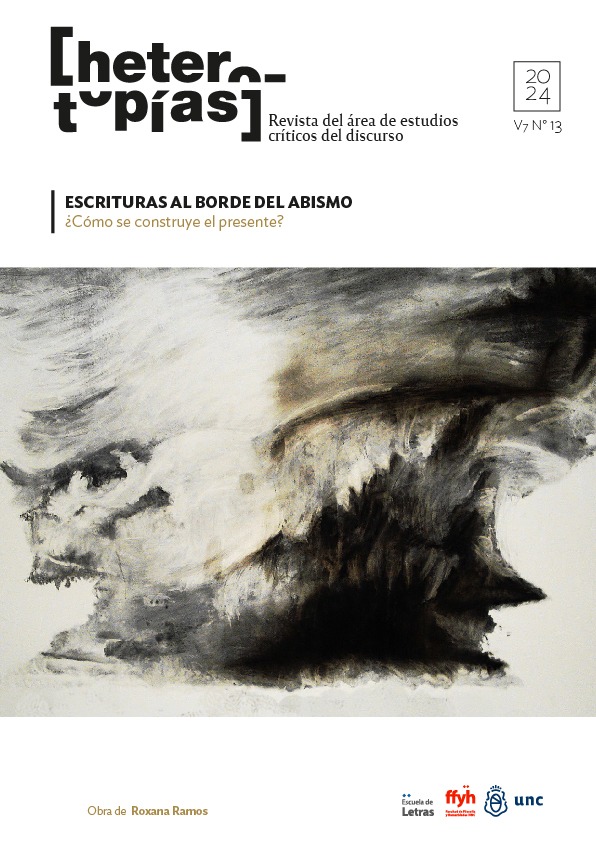From Latin to Memes: Notes on Evolution, Economy, and Context in Communication
Main Article Content
Abstract
The use of languages, occurring within human communities, has always been accompanied by attempts at standardization, norm-setting, and the refinement of linguistic practices, especially in educational or scholarly environments. The widespread eagerness to speak of a “superior dialect” or of certain practices being more “correct” than others has always led to a growing attachment to certain traditional forms and a kind of prejudice against not only specific linguistic changes but also communicative shifts in general. Indeed, we currently observe this prescriptive practice even in the rejection by some groups of the communicative trends of digital media and social networks, which many classify as degrading due to their often involving a formal simplification in comparison with previous forms. Starting from an interest in problematizing these prejudices against any type of evolution in our forms of communication, this text takes an expository journey through some specific examples of natural changes that have occurred in languages such as Latin and Spanish, which have often involved some loss of formal complexity, leading to an approach to what we might consider one of the most interesting recent phenomena in the evolution of our communication: memes. These discourses, which have dominated the digital sphere for some years now, allow us to express ourselves and communicate easily and efficiently with others.
Downloads
Article Details

This work is licensed under a Creative Commons Attribution-NonCommercial-ShareAlike 4.0 International License.
Those authors who have publications with this journal, accept the following terms: Those authors who have publications with this journal, accept the following terms:
a. The authors will keep their copyright and guarantee to the journal the right of first publication of their work, which will be simultaneously subject to the Creative Commons Attribution - Non-Commercial - Share Alike (by-nc-sa) Attribution License; no commercial use of the original work or any derivative works is allowed, the distribution of which must be done with a license equal to the one that regulates the original work.
b. Authors may adopt other non-exclusive license agreements for the distribution of the published version of the work (e.g., deposit it in an institutional telematic archive or publish it in a monographic volume) provided that the initial publication in this journal is indicated.
c. Authors are allowed and recommended to disseminate their work through the Internet (e.g. in institutional telematic archives or on their website) before and during the submission process, which may lead to interesting exchanges and increase the number of citations of the published work. (See The effect of open access).
References
Acosta R. Á. (1990). Del homo loquens al homo semioticus. En Describir, inventar, transcribir el mundo: Actas del IV Simposio Internacional de la Asociación Española de Semiótica (pp.13-20). Sevilla: Visor.
Aladro, E. (2017). El lenguaje digital, una gramática generativa. CIC. Cuadernos de Información y
Comunicación, 22, 79-94. Recuperado de https://revistas.ucm.es/index.php/CIYC/article/view/55968
Aladro, E. y Jardón. M. (2022). Los memes como jerga del lenguaje digital. CIC. Cuadernos de Información y Comunicación, 27, 143-157. Recuperado de https://revistas.ucm.es/index.php/CIYC/article/view/81695
Cassirer, E. (1967). Antropología filosófica. México: Fondo de Cultura Económica.
Castañeda, P. F. (1999). El lenguaje verbal del niño. Lima: Fondo Editorial de la UNMSM.
Dawkins, R. (1986). El gen egoísta. Barcelona: Salvat.
Douglas, N. (2014). It’s Supposed to Look Like Shit: The Internet Ugly Aesthetic. Journal of Visual
Culture, 13 (3). 314-339. Recuperado de https://journals.sagepub.com/doi/epub/10.1177/1470412914544516
Lakoff, G. y Johnson, M. (2007). Metáforas de la vida cotidiana. Madrid: Cátedra.
Lathrop, T. A. (1995). Curso de gramática histórica española. Barcelona: Ariel.
Lévi-Strauss, C. (1987). Mito y significado. Madrid: Alianza Editorial.
Marrero, V. (2009). Origen y adquisición del lenguaje. En M. V. Escandell. (Coord.), El lenguaje humano (pp. 339-368). Madrid: Centro de Estudios Ramón Areces, S. A.
Montaigne, M. (1987). Ensayos III. Madrid: Cátedra.
Obediente. E. (2000). Biografía de una lengua: nacimiento, desarrollo y expansión del español. Cartago: Asociación de Editoriales Universitarias de América Latina y el Caribe. Petronio. (1978). La cena de Trimalción. En El Satiricón (pp. 50-114). Madrid: Editorial Gredos.
Ruiz, E. (2020). Logos meme: pronunciando Coronavirus en Venezuela. Temas de comunicación, 40, 64-84. Recuperado https://revistasenlinea.saber.ucab.edu.ve/index.php/temas/article/view/4600/3839
Sartori, G. (1998). Homo videns. Buenos Aires: Taurus.
Shifman L. (2014). Memes in Digital Culture. Mass: MIT Press.
